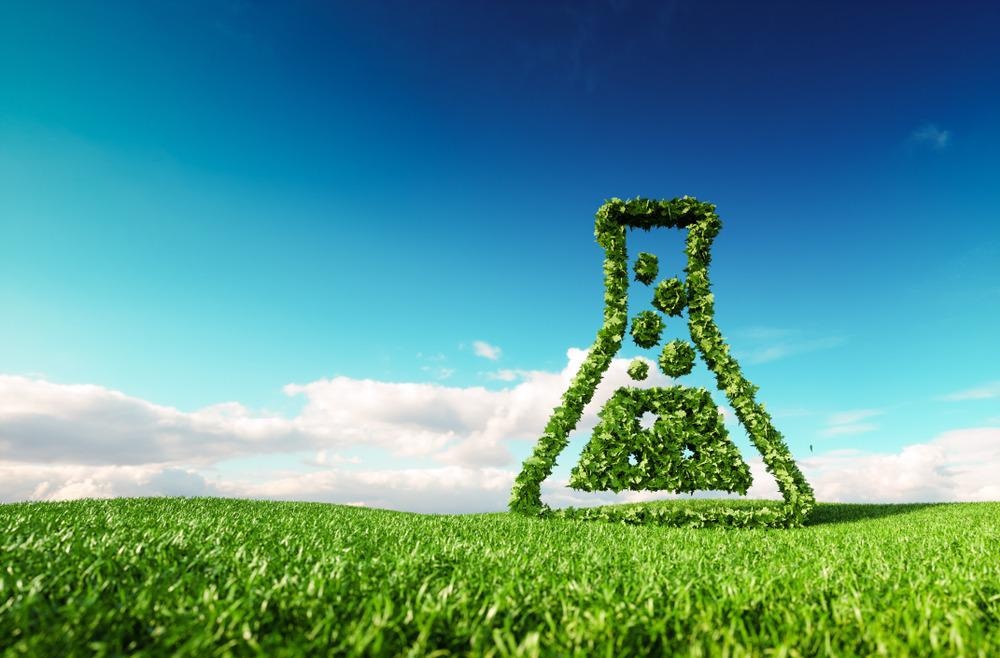An article available as a corrected proof in the journal Trends in Biotechnology brings to light the advancement of nanocell hybrid applications in the fields of renewable energy, green chemistry, and clean environment.

Study: Nanocell hybrids for green chemistry. Image Credit: petrmalinak/Shutterstock.com
Nanocell Hybrids Paving the Way for Green Chemistry
Concerns throughout the world about decreasing or eliminating the expenses associated with hazardous waste products have fueled the ongoing advancement of green biosynthetic technologies.
Aided by the hybridizing process in living organisms, there has recently been renewed focus on nanocell hybrids with various novel capabilities. These have the promise to catapult biogenesis into a new age of green chemistry.
Synthesis and Applications of Nanocell Hybrids
Nanocellular hybrids, which are generated through molecular level (or nanoscale or microscale) hybridization of abiotic substances and live cells, are incredibly successful methods for enhancing cellular function and incorporating novel functionalities not present in original cells.
The construction of nanocellular hybrids with biotic and abiotic elements is motivated by previous research revealing that the functionality and endurance of cells in nature may be improved by immobilization or confinement.
Developments in nanocellular hybridization have increased the complexity of cellular hybridized structures' functionalities and use.
Because of the specific functionalities of cells, nanocellular hybrids have unique applicability as strong energy instruments. The most popular and widespread use of immobilized active cells is to generate chemical energy in the shape of metabolic products and hydrogen, as well as electrical energy through biofuel cells.
Important Takeaways of the Study
Several concerns will govern the future advancement of nanocellular hybrids, which will be directed by the demands of those seeking cellular solutions in the sectors of power, ecosystem, and catalytic processes.
It is necessary to have a precise methodology for the interactive impacts of abiotic materials and live cells. To create appropriate nanocellular hybrids, suitable amounts of interactivity at the junction between live cells and abiotic substances are required.
In response to the necessity for highly efficient biological hybrid materials, components with robust and dynamic contacts, such as click chemical interactions, or yolk–shell constructions without interconnections, have arisen.
It is also crucial to understand the basic principle of nanocellular makeup. Owing to the diversity and continuity of cellular membranes, developing a single adaptable and standardized hybridizing technique for creating diverse hybrid cells is challenging.
Initial treatment of cellular membranes with polymers having changeable functional groups or fluid elements is expected to generate active frameworks for connecting cells and abiotic materials.
Designing live cells with a biological interface (like amino acid, protein, DNA, or peptide interfaces) would introduce unique coupling and might be a feasible technique to enable the uniform production of nanocellular hybrids.
Future designs would improve molecule identification, allowing for point-to-point functionalization, such as good specificity at molecular and cellular levels, high mass and energy transference, and selective catalysis. Creating a directional layout for future use can help with this.
Compared to genetic approaches, the multiplication of living cells is an unregulated phenomenon that occurs throughout and following the hybridizing procedures, and the incorporation of additional nano-functions is challenging to sustain.
The usage of fast-evolving smart materials could help to solve this challenge. Using proliferative autocatalysis to build nanohybrids for live cells might be a future breakthrough.
As a result, an autocatalytic proliferative nano-hybridized system for cell packaging may be developed in a short period of time. Furthermore, improving cellular activity, durability, and renewability is a constant challenge, and scalable manufacturing is still a work in progress.
The fragile character of both the biological framework of cells and the feeble connection that occurs between biotic cells and hybridized substances confounds practical uses in terms of durability and renewability.
Overall, the manipulative nanocell with superior efficiency and particular functionalities provided by nanoparticles, as well as a steady structure for long-term operating, would be the perfect hybridized biotic system with cells and nanomaterials.
To Conclude
Nanocellular hybrid research is a budding discipline that combines nanomaterials, biological, physical, chemical, and material engineering and science.
Great strides have been made in the development of structures with long-term sustainability and function during the last several decades. This discipline will keep progressing in tandem with research into novel assembly techniques, nanoparticles, morphologies, and functionalities.
There is no question that nanocellular hybrids will keep playing an essential role in new methods for renewable energy, environmental sustainability, and green chemistry.
Reference
Geng, W., Wang, L., & Yang, X.-Y. (2022). Nanocell hybrids for green chemistry. Trends in Biotechnology. Available at: https://www.sciencedirect.com/science/article/pii/S0167779922000269
Disclaimer: The views expressed here are those of the author expressed in their private capacity and do not necessarily represent the views of AZoM.com Limited T/A AZoNetwork the owner and operator of this website. This disclaimer forms part of the Terms and conditions of use of this website.